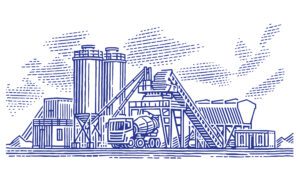Workplace Safety: 5 Tips to Reduce Stress for Safety Managers
A year into the COVID-19 pandemic, safety and EHS managers are familiar with adapting manufacturing standard operating procedures (SOPs) and policies as local infection rates fluctuate, and Occupational Safety and Health Administration (OSHA) health and safety regulations are updated. You know how to protect the health and safety of your frontline workers, while ensuring that production and quality standards are not negatively impacted. It’s a delicate balance, however, which puts more pressure than ever on those tasked with managing manufacturing operations.
According to a recent EHS Today survey, 58.7% of respondents said that their EHS program included policies for infectious diseases/illness prevention prior to COVID-19. But, more than one-third of business leaders indicated that ensuring a safe workplace will be more challenging over the next 12 months.
The past year has highlighted the importance of developing better systems and ways to streamline potential disruptions to manufacturing operations. Companies have realized that paper-based SOPs, checklists and work instructions are outdated – and prevent your operations from reacting to change when agility is key.
Safety and EHS managers are an underappreciated group of folks, yet during COVID-19 they’ve had one of the most important roles. Ensuring employee health, safety and wellness is still one of the highest priorities for companies.
After a year of balancing all this, it’s not surprising that safety and EHS managers are stressed. Here are 5 ways to reduce those anxiety levels.
5 Ways to Reduce Stress for Safety Managers
1. Automate Manufacturing Safety Protocols and Updates with Digital SOPs
Digital SOPs can help ensure compliance with changing health and safety requirements.
Connected worker technology offers a more flexible and scalable solution so that when you need to update a checklist or workflow, you can immediately make those updates and push them out across all sites.
This ensures your entire team will adhere to the latest protocols without disrupting their workflow, consistently follow each step outlined in their digital SOPs, and drive compliance – because a digital workflow acts as a record for the work executed.
Your on-site frontline workers are prompted to carry out the new procedures at the appropriate point in a process. They can also document compliance through the platform, which further reduces the work required to provide mandatory reports to management and regulatory authorities.
2. Prioritize and Simplify Worker Training for Health and Safety
With fewer resources at facilities and reduced staff on site, workers are having to take on more than one role at a time. They’re performing jobs that they’ve not been properly trained for, adding the risk of injury, contamination or other accidents. A connected worker platform can offer in-the-moment multimedia training, to walk a worker through a process for the first time, or serve as a refresher for a worker returning from furlough or sick leave.
When incorporated into daily workflows, safety instructions and training become a constant on-the-job exercise, rather than periodical offsite classroom courses. Incorporating safety protocols into the workflow also ensures that workers always follow the latest protocols, rather than “this is the way we’ve always done it.”
3. Make Use of Mobile-Based Collaborative Tools for Workplace Safety
Ordinarily, safety and EHS managers would regularly conduct safety meetings to highlight safety topics impacting the organization. These meetings were typically held in person. However, the pandemic has forced them to take place virtually and teams have leveraged digital information sharing to help document and quantify safety issues in real-time, through mobile technology.
Connected work enables new levels of collaboration – even when that collaboration might happen between people at different locations. Line workers can connect directly via a mobile app to shift supervisors, plant managers and others with questions on health protocols or other safety concerns. The mobile app contains audio, video and text functions that workers are familiar with on their smartphones.
4. Facilitate Contact Tracing With Mobile Technology
In the unfortunate event a worker is diagnosed with COVID-19, connected work can help safety and plant managers determine which other employees might be at risk. The adoption of digital technology can tell you who worked the same shift as that employee, as well as who might have come in contact with any machinery or other items the COVID-positive employee used. The platform also has a record of all sanitization activities conducted and ensures they were conducted thoroughly.
COVID-19 has made factory jobs more complex, and none more so than for those responsible for the health and safety of employees. But, by taking the proactive step of leveraging connected worker solutions, in conjunction with heightened health and safety awareness and training, safety managers can breathe a little easier knowing they are taking every step to ensure the latest protocols are adhered to in order to protect their teams.
5. Improve Workplace Safety Visibility With Technology
Under these circumstances, safety and EHS managers can help drive awareness and adoption of technology solutions to help maintain, improve and enforce safety practices in an ever evolving work environment.
While safety managers are working remotely, they still need to be able to keep a pulse on the manufacturing operations. The reporting of potential hazards, near misses and incidents – which have traditionally been done on paper – can now be transformed with digital tools.
Parsable’s Connected Worker® simplifies the process by providing a tool that can be used to report, track and investigate safety incidents while providing clear ownership and complete traceability for all involved in the process. You’re able to capture and analyze data at each step to clearly identify the root cause of an issue, and you now have a digital record strengthening your reporting.






